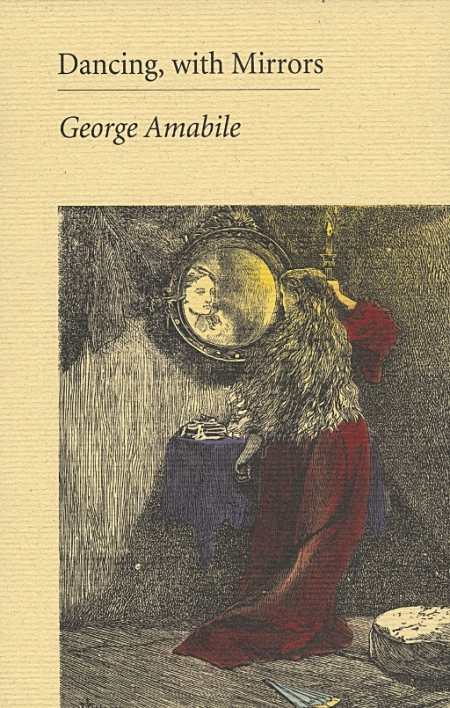Dancing, with Mirrors
Poetry can be an intimate affair, if the poet is willing to let down defenses and share every fear and insecurity, as well as triumphs and tribulations, with the reader. In Dancing, with Mirrors, George Amabile does so boldly and beautifully, in eleven cantos that invite the reader to share his experience of the world.
George Amabile is an accomplished writer, having published fiction, nonfiction, and poetry in several countries and in hundreds of anthologies, magazines, and journals. He has published eight books and won a number of prizes for his work, including the CAA National Prize for literature in 1982 for The Presence of Fire.
With such credentials, it’s no surprise that the words in Dancing, with Mirrors flow and dance like waterfalls cascading over the reader’s perceptions. Amabile’s first lines are as compelling as those of any fine novel, hooking the reader for the lengthy meditations that follow. Though the subjects of the cantos are sometimes vastly different, the constant of Amabile’s poetic eye carries them seamlessly together. His is a magnifying glass-like analytical vision balanced with a wider, lyrical temperament, and it’s a heady combination.
The title poem tracks the relationship between the author and a younger woman, from their initial meeting through her pregnancy and the birth of their son. “What We Take with Us, Going Away” is a moving reflection on the death of Amabile’s brother as a child. On every page, Amabile offers metaphors and similes that leave the reader looking at common sights in a new light. He compares morning traffic to herds of wild beasts, and sets a scene where “the faint, nearly transparent moon has a shocked face / like the ghost of an infant ripped from its mother / ’s breast in a storm.”
Amabile’s technique of carrying over into another line an “apostrophe-es” or other pieces of words or sentences introduces interesting double meanings, like a sentence that’s been split, diagram-style, with two possible endings, and many possible interpretations.
Amabile’s imagery is so rich that it’s easy to see through his eyes, even when the main action is subtle or internal: “Once, in Rome, I watched a fountain gather the shades / and values / of a Tintoretto dusk into gorgeous foam, a moment so / full it felt / as though my life had completed itself.”
Amabile’s work in Dancing, with Mirrors is impressive by any measure, but even moreso when considered among other books of poetry. Many modern poets shy away from longer works, but Amabile combines the succinct power of poetry with the scope and scale of longer forms. The result is a highly recommended, highly enjoyable example of a master at work.
Reviewed by
Peter Dabbene
Disclosure: This article is not an endorsement, but a review. The publisher of this book provided free copies of the book and paid a small fee to have their book reviewed by a professional reviewer. Foreword Reviews and Clarion Reviews make no guarantee that the publisher will receive a positive review. Foreword Magazine, Inc. is disclosing this in accordance with the Federal Trade Commission’s 16 CFR, Part 255.

